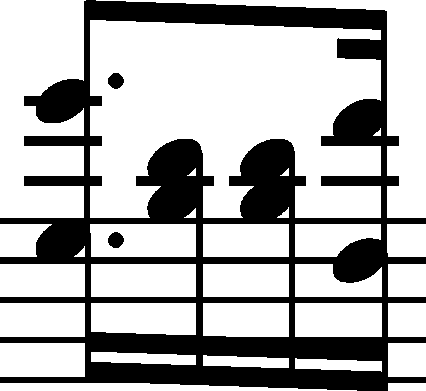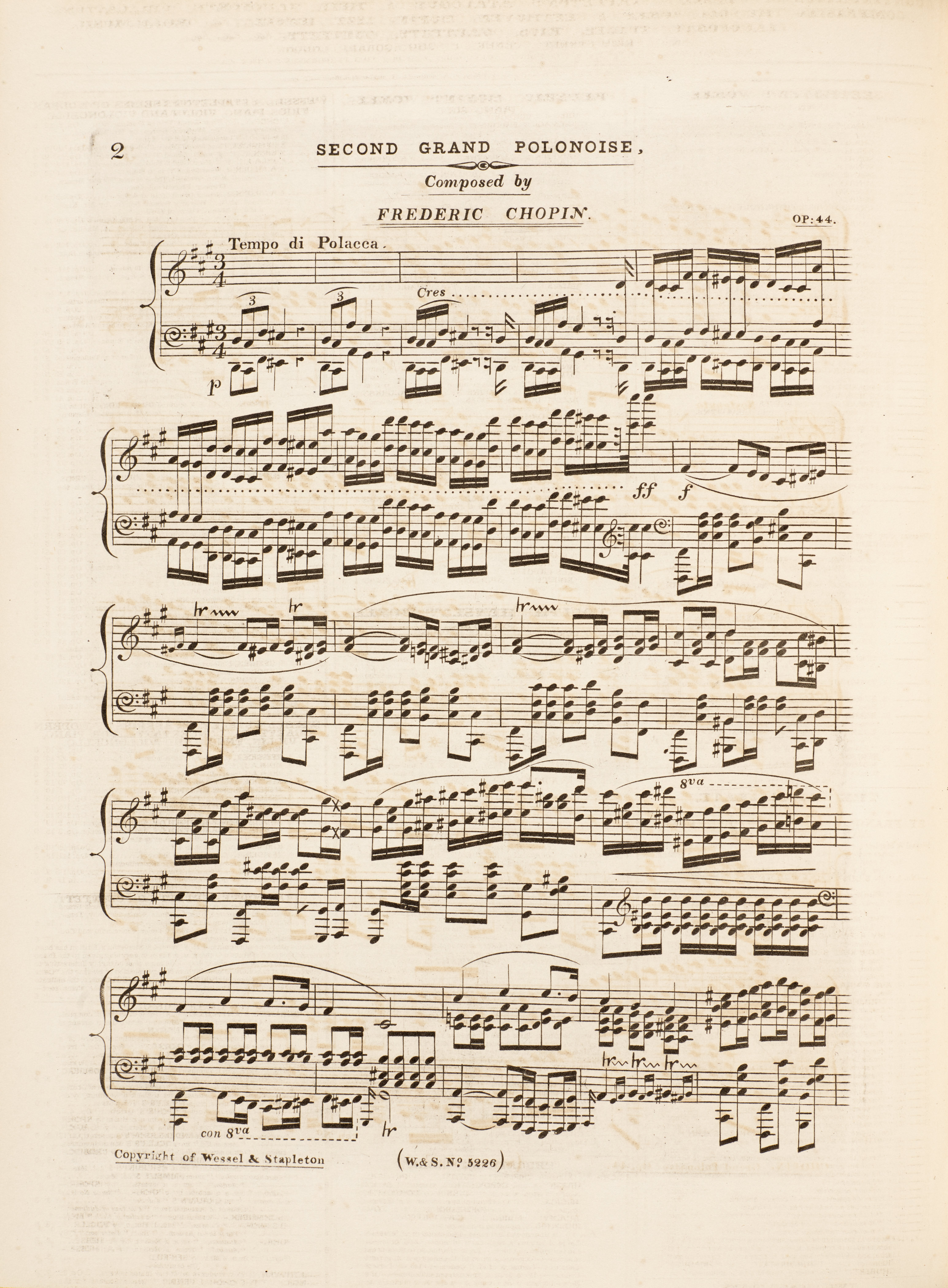Op. 2, Variations in B♭ major
Op. 10, 12 Etudes
Op. 11, Concerto in E minor
Op. 21, Concerto in F minor
Op. 22, Polonaise in E♭ major
Op. 24, 4 Mazurkas
Op. 25, 12 Etudes
Op. 26, 2 Polonaises
Op. 27, 2 Nocturnes
Op. 28, 24 Preludes
Op. 30, 4 Mazurkas
Op. 35, Sonata in B♭ minor
Op. 50, 3 Mazurkas
Op. 63, 3 Mazurkas
Op. 64, 3 Waltzes
(Op. 4), Sonata in C minor




Op. 44, Polonaise in F♯ minor
In FE (→EE) the crotchet stems reach only the top notes of the R.H. octaves on the 2nd beat of b. 13 and 14; similarly, in b. 15 it is only the top notes of the octaves that are separated as the top voice on the 3rd beat (in turn, both notes of each of those octaves belong to the bottom voice). It must have resulted from a misunderstanding: Chopin's notation was misunderstood by the copyist or, which is more likely, by the engraver of FE. Chopin would always write stems on the right-hand side of noteheads, which would result in an ambiguous notation in such a situation, e.g. in b. 15:  . The fact that Chopin meant to prolong both notes of the octaves is evidenced by the dots prolonging both notes in GE in b. 15 as well as by the dots in all sources in a similar situation in b. 36-40.
. The fact that Chopin meant to prolong both notes of the octaves is evidenced by the dots prolonging both notes in GE in b. 15 as well as by the dots in all sources in a similar situation in b. 36-40.
In GE the stems were assigned correctly, except bar 15. The sources also differ in the presence of dots prolonging the e2-e3 octave at the beginning of the 3rd beat of b. 15 – in FE1 both are absent, in FE2 and EE1 there is only the top one, while GE and EE2 contain both.
Compare the passage in the sources »
category imprint: Interpretations within context; Differences between sources
issues: EE revisions, Errors in FE, Errors in GE, FE revisions
notation: Rhythm

